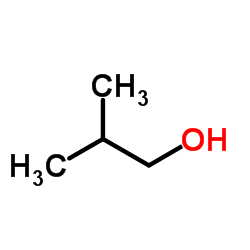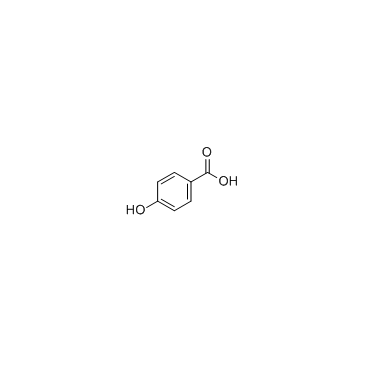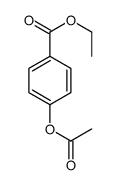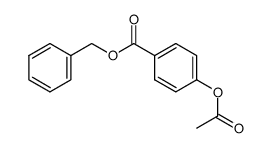4247-02-3
| Name | Isobutyl 4-hydroxybenzoate |
|---|---|
| Synonyms |
Benzoic acid, 4-hydroxy-, 2-methylpropyl ester
EINECS 224-208-8 Isobutyl 4-hydroxybenzoate Isobutyl paraben Benzoic acid, 4-hydroxy-, 2-methylpropyl ester (9CI) 2-methylpropyl 4-hydroxybenzoate MFCD00020167 |
| Description | Isobutylparaben (Isobutyl 4-hydroxybenzoate) is a constitutive androstane receptor (CAR) activator. Isobutylparaben has a broad-spectrum antimicrobial activity and widely used in personal care products and cosmetics[1]. |
|---|---|
| Related Catalog | |
| References |
| Density | 1.1±0.1 g/cm3 |
|---|---|
| Boiling Point | 302.3±15.0 °C at 760 mmHg |
| Melting Point | 76°C |
| Molecular Formula | C11H14O3 |
| Molecular Weight | 194.227 |
| Flash Point | 125.4±13.2 °C |
| Exact Mass | 194.094299 |
| PSA | 46.53000 |
| LogP | 3.28 |
| Vapour Pressure | 0.0±0.7 mmHg at 25°C |
| Index of Refraction | 1.524 |
| Storage condition | 0-6°C |
|
Section I.Chemical Product and Company Identification Chemical Name Isobutyl 4-Hydroxybenzoate Portland OR Synonym4-Hydroxybenzoic Acid Isobutyl Ester; Isobutylparaben Chemical FormulaC11H14O3 CAS Number4247-02-3
Section II.Composition and Information on Ingredients Toxicology Data Chemical NameCAS Number Percent (%)TLV/PEL Min. 99.0 (T) Not available.Not available. Isobutyl 4-Hydroxybenzoate4247-02-3 Section III. Hazards Identification Acute Health EffectsIrritating to eyes and skin on contact. Inhalation causes irritation of the lungs and respiratory system. Inflammation of the eye is characterized by redness, watering, and itching. Skin inflammation is characterized by itching, scaling, reddening, or, occasionally, blistering. Skin contact may result in sensitization. Always cover all exposed skin with an impermeable layer and use proper eye protection. A OSHA/MSHA approved dust and vapor respirator is required when working with this material. Follow safe industrial hygiene practices and always wear proper protective equipment when handling this compound. Chronic Health EffectsCARCINOGENIC EFFECTS : Not available. MUTAGENIC EFFECTS : Not available. TERATOGENIC EFFECTS : Not available. DEVELOPMENTAL TOXICITY: Not available. Repeated or prolonged exposure to this compound is not known to aggravate existing medical conditions. Section IV.First Aid Measures Check for and remove any contact lenses. In case of contact, immediately flush eyes with plenty of water for at least 15 Eye Contact minutes. Get medical attention. In case of contact, immediately flush skin with plenty of water. Remove contaminated clothing and shoes. Wash clothing Skin Contact before reuse. Thoroughly clean shoes before reuse. Get medical attention. InhalationIf the victim is not breathing, perform mouth-to-mouth resuscitation. Loosen tight clothing such as a collar, tie, belt or waistband. If breathing is difficult, oxygen can be administered. Seek medical attention if respiration problems do not improve. IngestionINDUCE VOMITING by sticking finger in throat. Lower the head so that the vomit will not reenter the mouth and throat. Loosen tight clothing such as a collar, tie, belt or waistband. If the victim is not breathing, perform mouth-to-mouth resuscitation. Examine the lips and mouth to ascertain whether the tissues are damaged, a possible indication that the toxic material was ingested; the absence of such signs, however, is not conclusive. Section V.Fire and Explosion Data Not available. May be combustible at high temperature.Auto-Ignition Flammability Flammable LimitsNot available. Flash PointsNot available. Combustion ProductsThese products are toxic carbon oxides (CO, CO2). Fire Hazards Not available. Risks of explosion of the product in presence of mechanical impact: Not available. Explosion Hazards Risks of explosion of the product in presence of static discharge: Not available. Fire Fighting Media SMALL FIRE: Use DRY chemical powder. LARGE FIRE: Use water spray, fog or foam. DO NOT use water jet. and Instructions Consult with local fire authorities before attempting large scale fire-fighting operations. Continued on Next Page Isobutyl 4-Hydroxybenzoate Section VI.Accidental Release Measures Spill CleanupIrritating material. Skin sensitizing material. Use a shovel to put the material into a convenient waste disposal container. Consult federal, state, and/or local authorities for Instructions assistance on disposal. Section VII. Handling and Storage Handling and StorageIRRITANT. SKIN SENSITIZER. Keep away from heat. Mechanical exhaust required. When not in use, tightly seal the container and store in a dry, cool place. Avoid excessive heat and light. Do not breathe dust. Information Section VIII. Exposure Controls/Personal Protection Use process enclosures, local exhaust ventilation, or other engineering controls to keep airborne levels below recommended Engineering Controls exposure limits. If user operations generate dust, fume or mist, use ventilation to keep exposure to airborne contaminants below the exposure limit. Splash goggles. Lab coat. Dust respirator. Boots. Gloves. Suggested protective clothing might not be sufficient; consult a Personal Protection specialist BEFORE handling this product. Be sure to use a MSHA/NIOSH approved respirator or equivalent. Exposure LimitsNot available. Section IX. Physical and Chemical Properties Physical state @ 20°CSolid. (Crystal, powder. Whtie - almostSolubility Soluble in methanol; white.) Very soluble in ethanol, ether, acetone; Very slightly soluble in water. Not available. Specific Gravity Molecular Weight194.23Partition CoefficientLOG Pow: 3.11 Boiling PointNot available.Vapor PressureNot applicable. Melting Point76°C (168.8°F)Vapor DensityNot available. Not available.Not available. Refractive IndexVolatility Critical TemperatureNot available.OdorNot available. Not available.Not available. ViscosityTaste Section X.Stability and Reactivity Data Stability This material is stable if stored under proper conditions. (See Section VII for instructions) Conditions of InstabilityAvoid excessive heat and light. IncompatibilitiesReactive with strong oxidizing agents. Section XI. Toxicological Information RTECS NumberDH2247000 Eye Contact. Ingestion. Inhalation. Routes of Exposure Not available. Toxicity Data CARCINOGENIC EFFECTS : Not available. Chronic Toxic Effects MUTAGENIC EFFECTS : Not available. TERATOGENIC EFFECTS : Not available. DEVELOPMENTAL TOXICITY: Not available. Repeated or prolonged exposure to this compound is not known to aggravate existing medical conditions. Irritating to eyes and skin on contact. Inhalation causes irritation of the lungs and respiratory system. Inflammation of the eye Acute Toxic Effects is characterized by redness, watering, and itching. Skin inflammation is characterized by itching, scaling, reddening, or, occasionally, blistering. Skin contact may result in sensitization. Always cover all exposed skin with an impermeable layer and use proper eye protection. A OSHA/MSHA approved dust and vapor respirator is required when working with this material. Follow safe industrial hygiene practices and always wear proper protective equipment when handling this compound. Section XII.Ecological Information Not available. Ecotoxicity Environmental FateNot available. Continued on Next Page Isobutyl 4-Hydroxybenzoate Section XIII. Disposal Considerations Waste DisposalRecycle to process, if possible. Consult your local regional authorities. You may be able to dissolve or mix material with a combustible solvent and burn in a chemical incinerator equipped with an afterburner and scrubber system. Observe all federal, state and local regulations when disposing of the substance. Section XIV. Transport Information Not a DOT controlled material (United States). DOT Classification PIN NumberNot applicable. Proper Shipping NameNot applicable. Packing Group (PG)Not applicable. DOT Pictograms Section XV. Other Regulatory Information and Pictograms TSCA Chemical InventoryThis product is NOT on the EPA Toxic Substances Control Act (TSCA) inventory. The following notices are required by 40 CFR 720.36 (C) for those products not on the inventory list: (EPA) (i) These products are supplied solely for use in research and development by or under the supervision of a technically qualified individual as defined in 40 CFR 720.0 et sec. (ii) The health risks of these products have not been fully determined. Any information that is or becomes available will be supplied on an MSDS sheet. WHMIS ClassificationOn DSL. (Canada) EINECS Number (EEC) 224-208-8 EEC Risk StatementsR36/37/38- Irritating to eyes, respiratory system and skin. R43- May cause sensitization by skin contact. SECTION 16 - ADDITIONAL INFORMATION N/A |
CHEMICAL IDENTIFICATION
HEALTH HAZARD DATAACUTE TOXICITY DATA
|
| Symbol |


GHS07, GHS09 |
|---|---|
| Signal Word | Warning |
| Hazard Statements | H315-H319-H411 |
| Precautionary Statements | P305 + P351 + P338 |
| Hazard Codes | Xn: Harmful; |
| Risk Phrases | 51/53 |
| Safety Phrases | S22-S24/25 |
| RIDADR | UN 3077 9/PG 3 |
| RTECS | DH2247000 |
| HS Code | 2918290000 |
|
~% 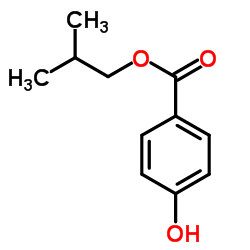
4247-02-3 |
| Literature: Archiv der Pharmazie (Weinheim, Germany), , vol. 276, p. 154,162 |
| Precursor 2 | |
|---|---|
| DownStream 4 | |
| HS Code | 2918290000 |
|---|---|
| Summary | HS: 2918290000 other carboxylic acids with phenol function but without other oxygen function, their anhydrides, halides, peroxides, peroxyacids and their derivatives Tax rebate rate:9.0% Supervision conditions:AB(certificate of inspection for goods inward,certificate of inspection for goods outward) VAT:17.0% MFN tariff:6.5% General tariff:30.0% |

